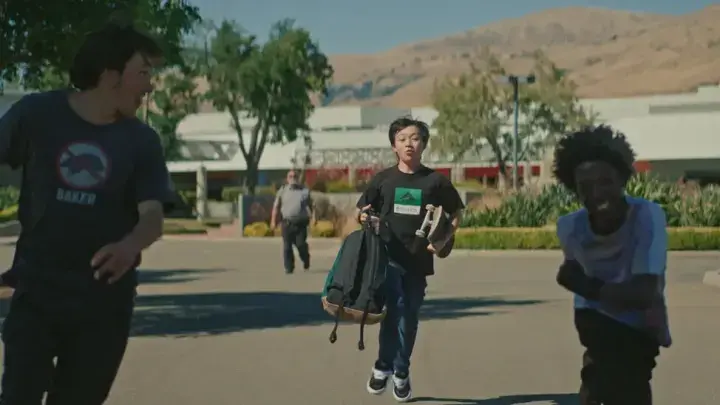Tribeca Film Festival ‘25 — Empire Skate; The Supreme Gentrification of Counterculture
- Tien Nguyen

- Aug 13
- 4 min read

You’re 15, you’re too young to drive, and you can’t afford to take public transit everywhere that you need to go. Maybe you're 12, you’re tired of walking, and you want to fly. You’re a kid and you see a teenager barely older than you on a skateboard going faster than you could ever imagine going on your feet. And you see them leap into the air, board spinning underneath their feet, and somehow they don’t fall. You’re a kid in a world where you have to wait, and you taste freedom in the gravel under your feet.
In the same world where the gravel is in the wheels in your feet, you find music as angry as you are and a passion twice as strong. You find other people doing what you thought nobody else was doing. They wear their clothes like you do and know what it feels like to fly. They know your life without you needing to tell them. In skate and in counterculture, you find your agency in your community.
This was more than the reality for the kids in the 80s and 90s focus of Empire Skate, a 2025 documentary by Josh Swade. This was life. Skating was their freedom. Skating was an escape and outlet for their problems. Skating was an act of strength. Skating was resistance. Skate was the reclamation of their public spaces. Skate was anti-everything about the system that fucked them over in the first place. But, most importantly, skating was fun. Through the stories of the kids that directly built the New York skate culture of the 80s and 90s emerges the love of the game that tied them all together. Through the things that they built comes the life and death of counterculture.
Punk is dead. Skate is Supreme. St. Marks is Dead. The Lower East Side is the land of 7 dollar coffee stores where matcha reigns the ruling order. But what does 2016 Jake Paul really know about the world that the red logo on his shirts come from? The two countercultures have never been strangers to each other. Countercultures are countercultures because they are built on communities of people searching for the outlets to the same problems. But the ride or die of these two communities has never come face to face with the third before. In the face of being consumed by the very thing that they were running against, we have floundered for an answer.
Supreme starts out of the skating community’s need for a skate shop that would remain open. Shirts with bright, bold logos on it initially solve a problem of the community’s inability to self-suffice due to its lack of size. A boy named Harmony Korine writes a screenplay about the youth drug use and violent nature of the skate community that gets turned into a film, which his friends star in as themselves. And the mainstream becomes fascinated with the titular Kids that are depicted in the film. Skate is cool, Supreme becomes a luxury fashion house, and the kids that built the culture find it unrecognizable to them.
It’s a story whose bones are found in the New York-laid bodies of punks, hippies, and the people of every counterculture that has come before. Countercultures find themselves materially consumed by the mainstream that they are fighting against, and as a result lose what made them recognizable in the first place. Punk’s ideals have been spread out for everyone to partake in. Those who were once a part of it have declared it categorically dead.
But skate is a counterculture like no other. The freedom to be young is the only principle. The antisfascist and counterculture nature of skate only arose out of the enjoyment of youth — it has never been the cause. And as such, where punk and other subcultures find themselves nihilistic in the face of their death and rebirth, skate finds in its youth an optimism that is unlike any other. The men who were once the kids of the 80s testify that they only moved away from skate because it was time for them to grow up. As they have become the adulthood that they were running away from, they find themselves, instead of continuing the patterns and brokenness of what they came from, giving back to the community and land that gave them their childhood.

As stated in the documentary, “Ain't no other people gonna do this like we did it.” But the child-like excitement in them as they recount their days in the air and their still tender heartbreaks at the loss that they experienced on the way paves way to an excitement in them — that the kids that long for the same freedom they had can do so even more easily. There will always be another 15 year old who longs to fly and feel their wings in the grip tape under their feet. And, hopefully, they will be able to find it with just a little less of the hardships of the people that came before them.
Attached to the middle of this piece is not a still from Empire Skate. It is a still from the 2024 film, Dìdi (弟弟). Which takes place in 2008, when I would have been 2, in a city 15 minutes from where I live. And features a boy who finds his love of filmmaking through skating. This piece is written in 2025 by a girl who found her love of shitty cameras and movement in filmmaking in the exact same way. Skate continued to live. Skate continues to live. Kids are still kids.
.png)












Comments